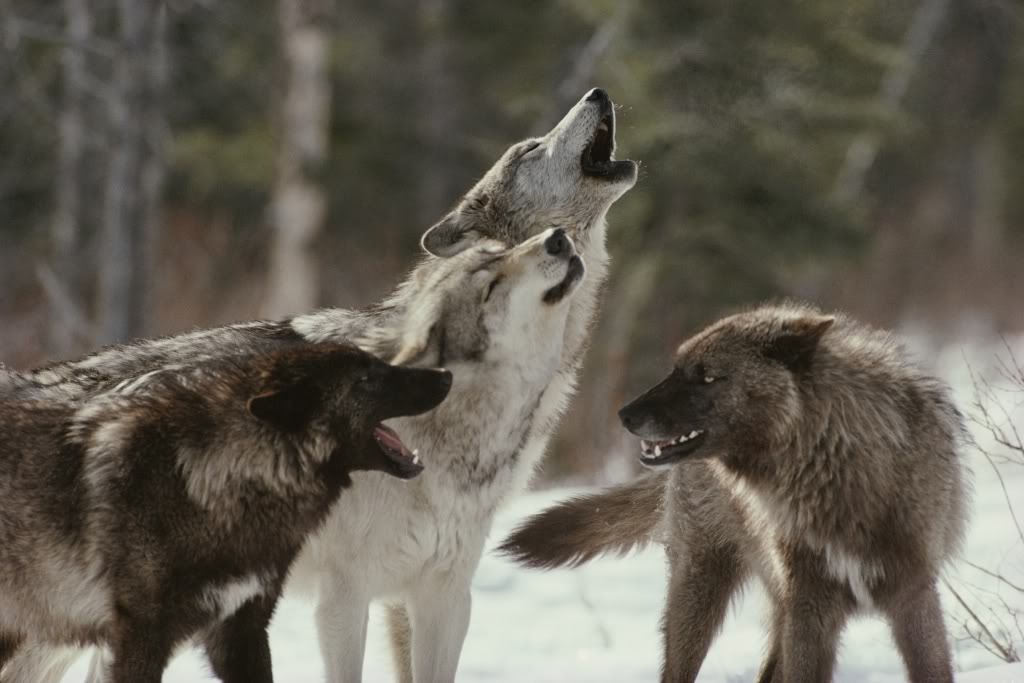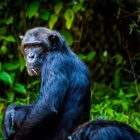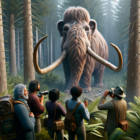Does the “Alpha Wolf” Really Exist in the Wild?

The concept of the alpha wolf is deeply ingrained in popular culture and scientific discourse for decades. However, recent advancements in wolf research have prompted a reevaluation of this paradigm, challenging our traditional understanding of wolf pack dynamics.
Barbara Zimmermann, a distinguished professor at Inland Norway University of Applied Sciences, stands at the forefront of this paradigm shift, wielding her expertise to dismantle the myth of the alpha wolf.
As Zimmermann delves into the annals of scientific literature, she unveils the genesis of the alpha wolf archetype—a narrative shaped by the pioneering work of Rudolf Schenkel in the mid-20th century.
How The Concept of Alpha Wolf Was Born
The perpetuation of the alpha wolf myth can be traced through a complex interplay of scientific literature, cultural narratives, and societal perceptions. To understand how this misconception took root and flourished, it’s essential to delve into the historical context and seminal works that shaped our understanding of wolf behavior.
The 20th century witnessed a surge of interest in animal behavior, driven by advancements in ethology and psychology. Rudolf Schenkel’s seminal work in the 1940s laid the groundwork for the alpha wolf concept, drawing from observations of wolves in captivity. Schenkel’s studies, conducted at the Basel Zoo in Switzerland, depicted a hierarchical social structure characterized by dominant alpha wolves and submissive pack members.
Schenkel’s findings resonated with prevailing attitudes towards social organization, which emphasized dominance and hierarchy. His depiction of wolf packs as rigidly structured entities, governed by alpha leaders, captivated the scientific community and the public.
The perpetuation of the alpha wolf myth can be attributed to a confluence of factors, including influential scientific literature and cultural narratives. David Mech, a prominent wolf researcher, played a pivotal role in popularizing the alpha concept through his seminal work, “The Wolf: Ecology and Behavior of an Endangered Species.”
Published in 1970, Mech’s book captivated readers with its vivid portrayal of wolf behavior, cementing the alpha wolf archetype in the public consciousness. Despite Mech’s subsequent efforts to rectify the misconception, the alpha wolf narrative endured, entrenched in scientific literature and popular media.
How The “Alpha Wolf” Gained Momentum
The concept of the alpha wolf resonated deeply with societal perceptions of leadership and power dynamics, mirroring human hierarchical structures. As a result, the alpha wolf archetype became deeply ingrained in popular culture, perpetuated through literature, film, and folklore.
Thorleif Schjelderup-Ebbe’s concept of the pecking order, originally applied to chickens, further contributed to the narrative of dominance hierarchies in social animals. The notion that individuals within a group compete for status and dominance gained widespread acceptance, shaping scientific discourse across disciplines.
Despite mounting evidence challenging the validity of the alpha wolf concept, its enduring influence persisted well into the 21st century. Mech’s efforts to revise his earlier work and dispel misconceptions were met with resistance, as entrenched beliefs proved difficult to dislodge.
How the Alpha Wolf Myth is Changing
In recent decades, the landscape of wolf research has undergone a profound transformation, marked by a fundamental reassessment of traditional notions of alpha dominance. This paradigm shift, fueled by advancements in technology and methodology, has illuminated the intricacies of wolf pack dynamics with unprecedented clarity.
One pivotal arena of inquiry has been the study of wolf behavior in natural settings, such as Yellowstone National Park. Here, researchers have had the unique opportunity to observe wild wolf packs in their native habitats, free from the constraints of captivity. Through meticulous field observations and sophisticated tracking techniques, scientists have gained invaluable insights into the social dynamics of wolf packs.
Contrary to the hierarchical model espoused by earlier studies, which portrayed wolf packs as rigidly structured entities governed by alpha dominance, contemporary research paints a more nuanced picture. Instead of vying for dominance, parent wolves assume leadership roles within the pack, guiding their offspring through the intricacies of pack life.
L. David Mech, a pioneering figure in the field of wolf biology, played a pivotal role in catalyzing this paradigm shift. His seminal research in the late 1990s challenged entrenched beliefs surrounding alpha wolves, advocating for a more holistic understanding of pack dynamics. Mech’s observations, gleaned from years of fieldwork and firsthand experience with wild wolf populations, underscored the central role of parental guidance in shaping pack structure and behavior.
By elucidating the familial basis of pack leadership, Mech sought to dispel long-standing misconceptions and promote a more nuanced perspective on wolf sociality. His groundbreaking studies shed light on the complex interplay of factors that govern pack dynamics, from parental investment to cooperative hunting strategies.
Do Alpha Exist in Other Species?
While the concept of alpha dominance has been called into question in the context of wolf packs, its prevalence in other species, particularly primates, remains a subject of ongoing investigation. Amongst some primates, alpha males are very much a tangible reality, exerting their influence through a combination of behavioral cues and physiological traits.
In the lush forests of Costa Rica, for example, Kathy Jack, a primate behavioral ecologist at Tulane University, has observed the unmistakable presence of alpha male behavior in Capuchin monkeys. These dominant individuals often exhibit conspicuous signs of status, such as being the first to eat, receiving preferential grooming from others, and commanding deference from fellow group members.
Biological markers further underscore the hierarchical nature of primate societies. In species like Capuchin monkeys and Mandrills, alpha males typically boast larger body sizes and experience hormonal changes associated with dominance. For instance, once a male Mandrill ascends to alpha status, his testosterone levels soar, accompanied by an increase in testicular size.
What Exactly Is An “Alpha”?
Yet, the question of what defines an alpha remains a topic of debate among primatologists. While some researchers explore personality traits that might predispose individuals to alpha status, others, like Kathy Jack and her team, delve into the interplay between hormones and social dynamics. Through a decade-long study, they aim to unravel the complexities of alpha dominance, challenging conventional wisdom that attributes top-monkey status to inherent traits.
In the realm of ethology, a dominance hierarchy governs social interactions within animal groups, giving rise to alpha and beta individuals. These hierarchies emerge as animals vie for access to resources and mating opportunities, establishing a pecking order shaped by repetitive interactions. Yet, the relationship between rank and reproductive success is far from straightforward, with nuances apparent across different species.
For instance, among rhesus macaques, higher-ranking males sire more offspring, yet the alpha male seldom holds this distinction. Instead, a complex interplay of rank and reproductive success unfolds, reflecting the intricacies of primate social dynamics. Similarly, in wild male baboons, the alpha male experiences heightened levels of stress hormones, underscoring the physical toll of dominance on individual fitness.
Subordinate individuals often bear the brunt of hierarchical structures, facing reproductive disadvantages and health risks. In species like brown hyenas and African wild dogs, high-ranking individuals monopolize mating opportunities, leaving subordinates with limited reproductive prospects.










